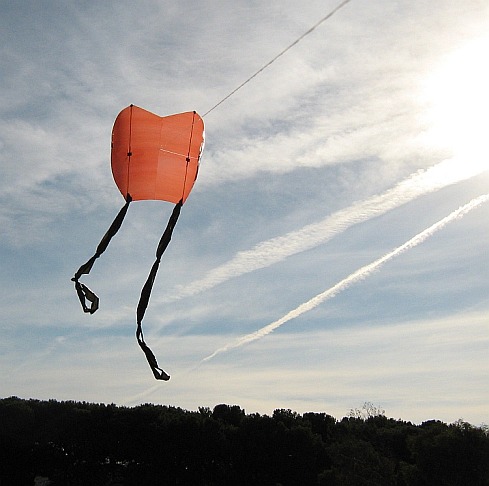- Home Page
- Better Kites
- ... Sled Kite
How to Build a Sled Kite
Step by Step—Page 3 of 3
The MBK 2-Skewer Sled
How to Build a Sled Kite
Flying!

First, if it's very windy outside, stay home! This is a light-to-moderate-wind kite and won't like being launched in a gale. There's our original 2-Skewer Sled in the photo up there, flying in a very light late-afternoon breeze. It required those tails to fly stable.
Out in the Field
Sled-kite stories of my real-life flying experiences are worth checking out!
Illustrated with photos and videos, of course.
Assuming there is some breeze outside, just dangle the kite at arm's length until the wind catches it. As long as you feel the kite pulling, let out line slowly by taking loop after loop off the winder.
Another approach is to get a helper to hold the kite up and let it go, on the end of maybe 15 or 20 meters (50 feet) of line. This way, the kite soon gets high enough to make it easy to let more line out.
Have fun flying, and I hope you've enjoyed learning how to build a sled kite!
Now, just in case you have actually made and flown this kite at least once already:
Flight Reports From Other Visitors
Click below to read about various kite-flying adventures, contributed by other visitors to this page...
Satisfying Sled
One day, I decided to make the two skewer sled kite. I made it out of a very thin garbage bag and some "spars" from long but strong bamboo spars.
The …
As mentioned earlier, there's more kite making on this site than you can poke a stick at. :-)
Want to know the most convenient way of using it all?
The Big MBK E-book Bundle is a collection of downloads—printable PDF files which provide step-by-step instructions for many kites large and small.
That's every kite in every MBK series.
